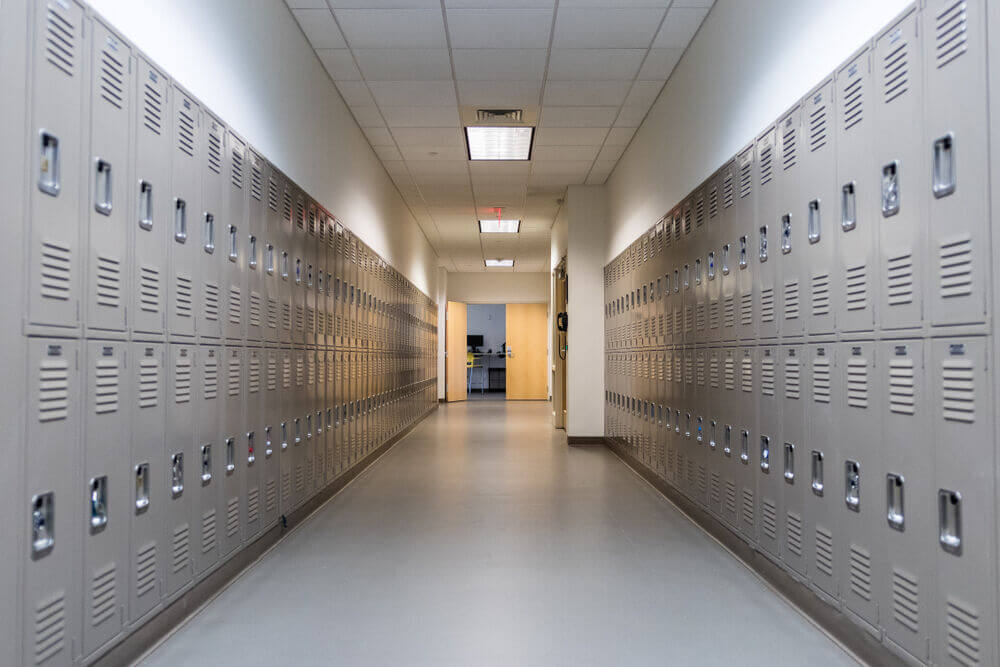To access the Herald’s local coronavirus/COVID-19 coverage, click here.
COURT HOUSE – Schools will reopen, in some form, in about three weeks. Guidance is still appearing with regularity, some of it altering guidance already provided.
Whatever their feelings on in-person instruction, parents are anxious about their children’s safety. In many households, that anxiety is heightened by a need to regain the benefits of school for child care, so parents can begin rebuilding damaged home finances. Teachers unions protested, what they see as, a lack of concern for the safe return of their constituency.
School districts worked hard on long, involved plans to accommodate health and safety protocols. Most will craft an educational experience, if uninterrupted, that blends in-person instruction with a planned approach to remote learning.
New case infection thresholds that would disrupt or even derail the in-person component of instruction appear set low enough that one can almost predict they will be triggered.
In the midst of all this, the flow of information is anything but consistent.
What are People Being Told?
Many agree that children benefit most from in-person instruction in a school setting that supports them academically, socially, and psychologically.
The disagreement comes when parents, educators, political leaders, and those charged with economic recovery try to move to practical evaluations of risk and the development of plans to cope with that risk.
In some areas of the nation, teacher strikes forced schools to close, which was the case when a school district outside of Phoenix, Arizona, was hit with a teacher “sick out.” A suburban Atlanta, Georgia, school district reopened and almost immediately ended up quarantining almost 1,200 students.
There is no consistent guidance on when a school that reopens should close. In New York, Gov. Andrew Cuomo said schools would close if the region the school is in has an infection rate of 9% or above. California officials said schools would close if the infection rate, in a school, hits 5% in a two-week period.
The nation’s largest school district, New York City, said its schools would “temporarily” close for “investigation” under a variety of scenarios, including one in which two students test positive in different classrooms, an almost impossible condition to avoid.
The uncoordinated guidance led some to predict rolling closures at the start of the new school year. If that becomes a reality, the education benefits of reopening the schools could be completely lost to the disruption.
U.S. Secretary of Education Betsy DeVos said, in an interview, that, “Kids are actually stoppers of the disease and they don’t get it and transmit it themselves.”
Her comments were criticized by health experts. A German study that the U.S. Education Department released to support the secretary’s comments failed to do so when the study’s authors said its results would not apply to the U.S., where so many areas of the nation are witnessing soaring community spread.
The U.S. Education Department maintains that “science remains on the side of reopening schools,” yet the uncertainty means that the U.S. Education Department’s comments add to the noise rather than resolve the issues.
The Centers for Disease Control and Prevention (CDC) points out that children are usually “super spreaders” of respiratory germs, but not in the case of SARS-CoV-2 (the virus that causes COVID-19). CDC guidance, up until a few days ago, pointed to the fact that those under 18 years old tested positive at rates far below their percentage in the population.
The Harvard T.H. Chan School of Public Health released research that suggests children under the age of 10 are significantly less susceptible to the virus than teenagers and adults, while children older than 10 are similar to adults, except for those over 60 years old.
The CDC reports that it is “unclear” if children spread the virus and that it may depend on “if they are sick,” meaning symptomatic.
A study in nature says that the vast majority of infected school-age children don’t have symptoms, reducing their likelihood of transmitting the virus, yet some school districts have low thresholds for positive tests among in-person students when considering halting or abandoning the experiment with in-person instruction.
That guidance usually does not distinguish between symptomatic or asymptomatic positive tested students.
To add to the confusion, several recent studies and reports, some even released prior to peer review, find COVID-19 infections among a wider range of students at various age groups. Reports of outbreaks among children at foreign schools are leading to greater caution and, once again, some level of backtracking on previous wisdom.
CDC advice to pediatric health care providers, updated Aug. 14, removes most of the clarity that might have existed previously. That recent guidance states that it is “unclear” if children are as susceptible to the virus as adults. It is also unclear if children can transmit the virus as effectively as adults.
The guidance states that “evidence suggests” that “children can spread the virus effectively in households and camp settings.”
What Happens When Kids Get Sick?
The number of cases among children in the U.S. has been steadily rising, according to the CDC. As of Aug. 3, those under 18, according to the CDC, comprise 22% of the U.S. population and 7.3% of all cases of COVID-19.
That number is well below the population level for the group; however, it is also higher than the 5% of all COVID-19 cases the U.S. Education Department was pointing to in mid-July.
Part of the reason this new level of infection is known is more widespread testing. The CDC says that the true incidence of SARS-CoV-2 infection, in children, is not really known due to a lack of testing and a long period in which, with schools closed, testing prioritization was aimed at adults.
What is known is that hospitalization rates for children are significantly lower than for adults, “suggesting,” says the CDC, that children have less severe illnesses from COVID-19 than adults.
One big caution is that children, just like adults, with certain compromised health profiles, are much more susceptible to serious consequences from COVID-19.
Two factors that were present in the research from the start are that COVID-19 infections tend to increase in severity with age and that individuals with certain underlying health conditions may experience more severe illness, regardless of age.
There are also rare cases of Multisystem Inflammatory Syndrome in Children, MIS-C, that appear to be linked to COVID-19 infections. In New Jersey, there were 55 total cases, so far. It is a rare ailment, but a horrible one for the parents who must endure it with an infant or young child.
Given the rapid changes in the knowledge bases, children do not seem to experience, on the whole, serious consequences from COVID-19 infection. That is drawn from the fact that they have lower hospitalization rates and many fewer deaths.
One study at the London School of Hygiene and Tropical Medicine found that clinical symptoms manifest in about 21% of 10 to 19-year-olds infected with COVID-19. That percentage increases to 69% for those over the age of 70 who are infected.
Some researchers are saying the lower risks for children may be an artifact of the fact that they have been largely sheltered since schools closed in the spring.
Two Questions Remain
Amid all of the questions and uncertainty, two broad areas of concern remain.
How susceptible are children to the virus and how likely are they to have a serious illness from it if infected? This includes all the research being done on the long-term impacts of infection.
How dangerous are children as transmitters of the disease? What are the odds that children will, perhaps asymptomatically, carry the virus back to households that contain individuals much more at risk if infected?
There is no clear voice in all the chatter because the nation has largely battled the disease in a long series of local scrimmages rather than as a national priority. The benefits of local response carry with them the disadvantages of local response.
The answers are not anywhere near definitive. The conclusions drawn from the available data are always tentative.
One factor of benefit to Cape May County schools struggling to reopen is that the community transmission rate, based, at least, on the new cases data daily released by the county Health Department, appears to be under control.
Another factor that may help is that schools reopen as the population, in the county, begins the process of shrinking to its low, permanent population base. The county will still have months of out-of-county individuals in its midst, but the five and six-fold increases in population will end with the summer, in part, because schools open elsewhere, as well.
The University of Minnesota Center for Infectious Disease Research offered a prediction regarding school-age children going back to school: “We will see transmission.” How much is “unclear.”
The question will be where the county places its threshold for reaction and how well it can navigate the resulting disruptions.
To contact Vince Conti, email vconti@cmcherald.com.
Stone Harbor – Bob Ross thank you for all your years of volunteer service to the community of Stone Harbor. A Lifelong resident And property owner. 10 years on school board, 6 years on zoning board they can't…








